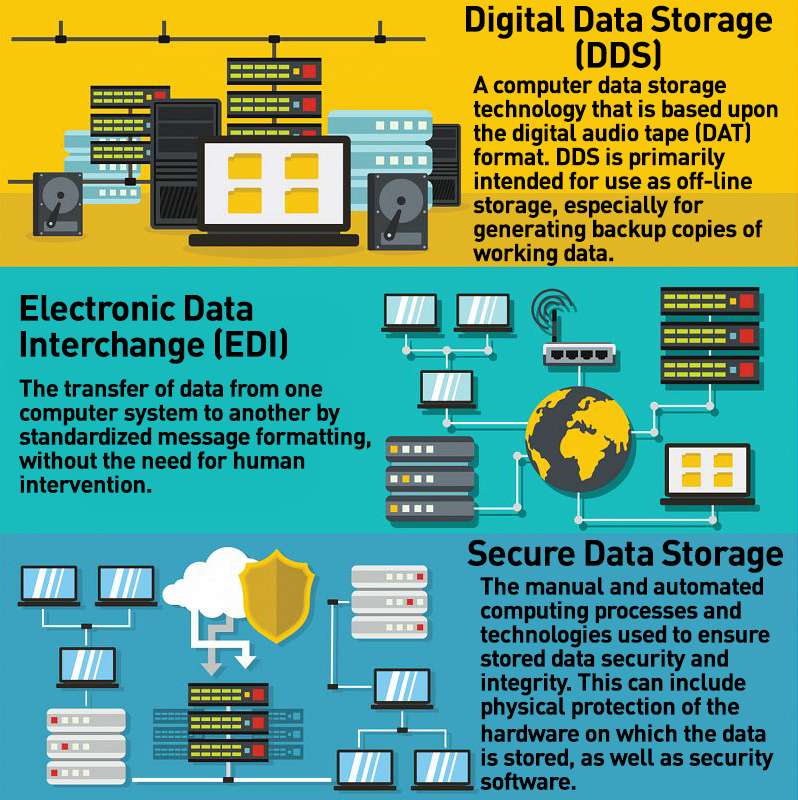The Effect of Effective Data Destruction on Cyber Security Threat Administration
The Effect of Effective Data Destruction on Cyber Security Threat Administration
Blog Article
The Relevance of Effective Data Devastation Practices in Shielding Sensitive Details and Ensuring Computer System Safety
In a period where data violations are increasingly common, the relevance of reliable data damage practices can not be overemphasized. Implementing durable data damage methods not just alleviates these threats however also lines up with legal compliance needs, making sure that organizations promote their reputation and foster customer trust fund.
Recognizing Data Devastation
Recognizing data destruction is crucial in today's electronic landscape, where delicate information can conveniently be compromised. Effective data destruction entails not merely making sure but deleting documents that data is irretrievable through extensive approaches. This process is important for companies that manage private customer information, copyright, or inner documents, as any kind of breach can bring about severe economic and reputational effects.
Information damage includes various strategies, consisting of shredding physical media, degaussing magnetic storage gadgets, and using software-based options that overwrite data several times. Each approach offers a specific objective and has to line up with the level of sensitivity of the details being taken care of. For instance, physical devastation is typically liked for hard disks including very confidential information, while software application approaches could suffice for much less delicate info.
Additionally, adhering to market criteria and regulations, such as the General Information Security Regulation (GDPR) or the Medical Insurance Transportability and Liability Act (HIPAA), is essential for conformity and to alleviate lawful dangers. Organizations has to create a robust data damage plan, train workers on ideal techniques, and on a regular basis investigate their treatments to make sure that all sensitive info is disposed of safely and successfully.
Risks of Inadequate Practices
Inadequate data devastation techniques reveal organizations to significant risks that can have far-reaching effects. When sensitive info is not properly disposed of, it stays prone to unauthorized gain access to, which can lead to data breaches and identity burglary. Such incidents not only endanger the safety of people but likewise tarnish the organization's credibility, resulting in a loss of consumer depend on and potential economic effects.
Additionally, regulative conformity is progressively stringent in many sectors. Failing to follow information devastation guidelines can result in significant fines and lawsuits against companies. These penalties can divert and strain financial resources attention from core organization procedures.
Furthermore, the misuse of residual data can result in intellectual residential property burglary or company espionage, endangering competitive benefits (data destruction). The influence of poor data destruction prolongs past prompt monetary losses; it can likewise result in long-term damage to brand honesty and market setting

Organizations need to recognize that information security is not only about avoiding breaches; it likewise encompasses the responsible administration of information throughout its lifecycle. Neglecting efficient information devastation protocols can have tragic effects, emphasizing the necessity for robust actions to alleviate these risks.
Best Practices for Data Damage
Executing reliable data damage methods is important for safeguarding delicate details and preserving compliance with regulative criteria. Organizations needs to adopt a multi-faceted strategy to make sure that information is irretrievable, consequently avoiding unapproved accessibility and possible breaches.
First, information ought to be categorized based on sensitivity, enabling companies to use ideal destruction approaches customized to the level of risk. For electronic information, making use of software-based data-wiping tools that follow market criteria can efficiently overwrite existing information. Physical devastation techniques, such as shredding or degaussing, are crucial for tools that keep delicate details, guaranteeing total elimination.
Developing a clear information retention policy is essential, outlining how much time different types of details ought to be retained prior to damage. Normal audits of data storage systems are also necessary to identify outdated or unnecessary data needing removal.
Furthermore, training staff members on the significance of information devastation and the specific protocols to comply with fosters a culture of security within the company. Preserving paperwork of data devastation processes offers liability and supports compliance with outside policies and interior policies. By sticking to these finest techniques, companies can considerably minimize the dangers connected with information direct exposure.
Legal and Compliance Considerations

Failure to adhere to these guidelines can lead to severe penalties, including considerable penalties and reputational damage. Organizations should execute a durable data destruction policy that straightens with these lawful structures and supplies clear standards on the correct techniques of data disposal, whether physical shredding or digital cleaning.
In addition, maintaining paperwork of data damage tasks is necessary for demonstrating conformity throughout audits or evaluations. By prioritizing legal and compliance factors to consider, organizations can improve their information security position and foster trust fund with customers and stakeholders, inevitably adding to a more safe and secure information management setting.
Benefits of Effective Information Damage
Efficient data devastation practices expand beyond simple compliance; they supply considerable benefits to companies that prioritize them. By guaranteeing that sensitive information is irretrievably destroyed, organizations minimize the danger of information violations and the potential monetary effects connected with them. This aggressive approach not just safeguards versus unauthorized gain access to but additionally improves the total reliability of the organization in the eyes of stakeholders and clients.
Executing durable information damage approaches, such as physical devastation of storage devices or advanced data cleaning strategies, adds to the strengthening of an organization's cybersecurity stance. data destruction. It decreases the likelihood of intellectual residential property theft and shields proprietary details, see page therefore maintaining a competitive edge out there

Conclusion
In verdict, efficient data damage techniques are crucial for securing sensitive details and enhancing total computer system safety and security. Inevitably, a commitment to durable data devastation approaches promotes a society of responsibility, thus enhancing an organization's cybersecurity position and maintaining customer depend on.

Report this page